Independence Day the Sustainable Way
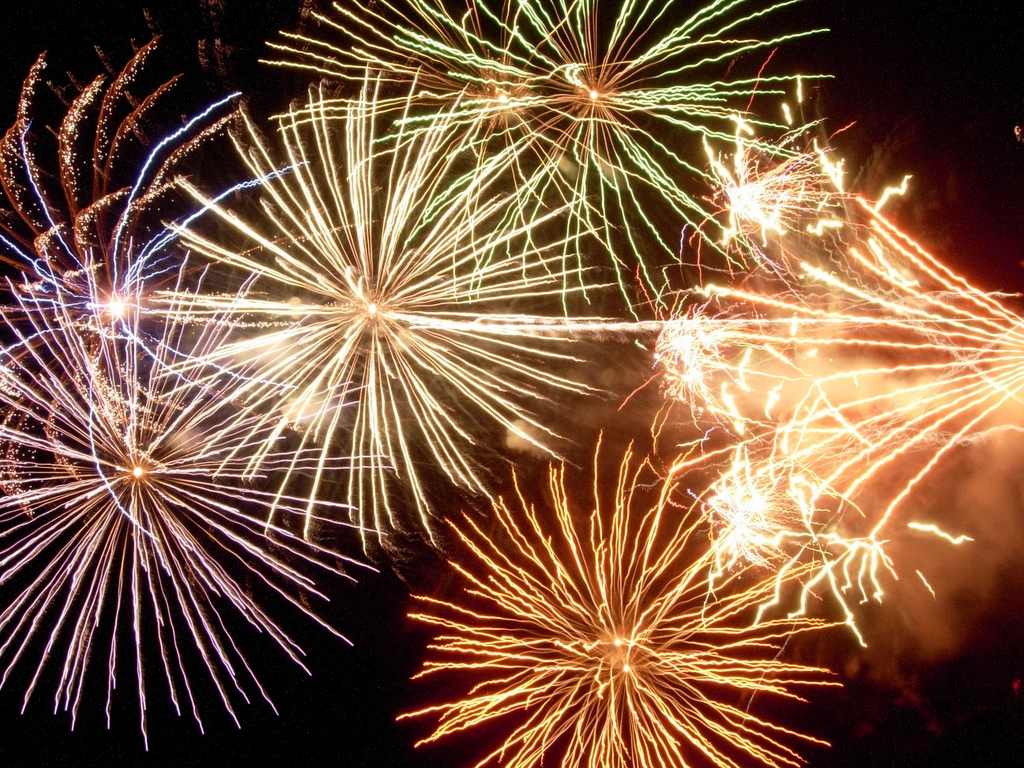
I like fireworks; they never fail to impress me. Remember that as you read this. They do, however, come with risks, including a lot of environmental and health risks. LiveGreen wants you to be safe and sustainable on your holiday; please note the simple tips below.
When it comes to fireworks, leave it to the pros, there are many good shows to watch on multiple days in the metro area. You stay safe and save money.
If you are going to light fireworks at your home, follow these safety tips to reduce your family’s chance of being injured or starting an unintentional fire. Don’t forget to be considerate of Veterans and take special care of your pets!
Fireworks contain a variety of toxins and pollutants that can affect you and the environment around us, especially when they make their way to waterways. The compounds in fireworks and their smoke cause cancer, nervous system damage, kidney failure, lung diseases, and skin diseases. Some risks are immediate, especially for asthmatics and people with chronic lung diseases, while others show up over time. The same risks apply to wildlife with aquatic animals being affected more quickly.
To protect yourself, your property and ensure our waterways and local ecosystems are not damaged, properly dispose of all fireworks and never allow them to enter storm drains. Follow Keep Omaha Beautiful’s simple steps.
If you have left over fireworks, don’t forget the Omaha Police Department’s Firework Amnesty Day, usually held the following weekend.
To make the rest of your holiday festivities sustainable, check out these easy tips:
- Buy in food and supplies bulk; don’t forget your reusable shopping bags
- Don’t buy bottled water or individually canned/bottled beverages. Buy and serve in larger containers in reusable cups….and plates/utensils.
- Provide recycling containers for guests.
- When decorating, don’t buy new. Use what you have, visit second-hand stores, and be creative!
- Leaving home?
- Turn your thermostat up and turn off lights to save energy and money
- Use public transportation and/or carpool to get to your destination
- Eat less meat and more vegetables—it’s healthier, too!
- If you are grilling, electric or propane grills are better than charcoal. If you must use charcoal, but a brand that uses invasive tree species and forego lighter fluid for a chemical free starter.
- Encourage local officials to use biodegradable and gunpowder-free (smoke-free) fireworks, launched with compressed air (it’s what Disney does!)
Ditch the Plastic
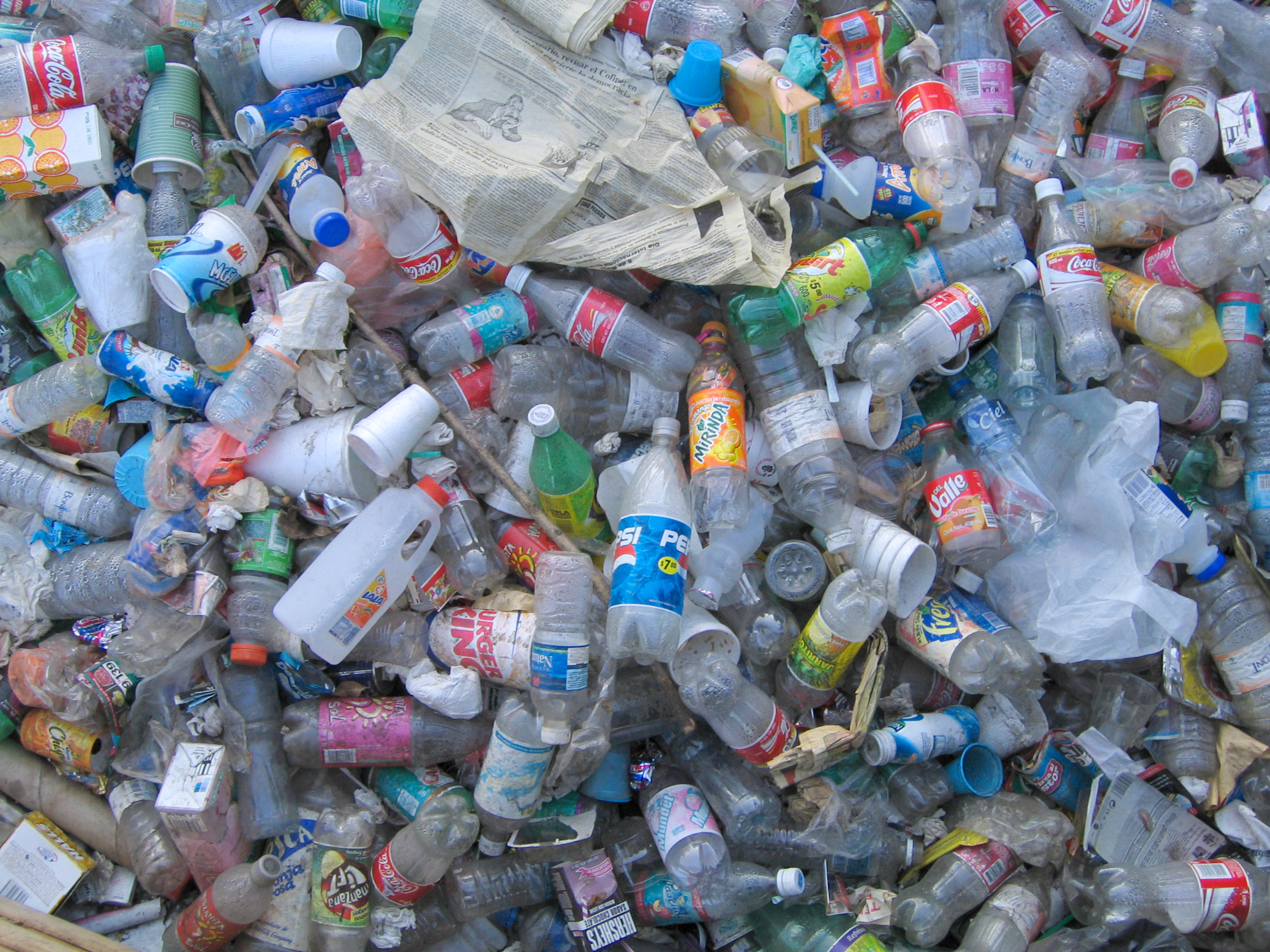
Plastic, plastic, plastic. We live in a plastic world; countless everyday items are made from plastic, everything from grocery bags to toothbrushes to bottles. Plastic has its place, especially in healthcare, but you’ve probably seen an article or two floating around on plastic consumption and the impact it’s having.
So, is it really that big of a deal?
Yes! Plastic pollution is a problem—not just for the environment but also for your health. It can take hundreds of years for plastic items to biodegrade and items like plastic bags and bottle caps
often find their way into oceans, rivers, and streams where they harm wildlife, spoil the landscape, and clog infrastructure. If that isn’t concerning on its own, plastics break down into microplastics. These tiny particles are contaminating water sources and making their way up the food chain onto our dinner plates. Even beer has fallen victim to contamination.

It might come as a surprise, but it’s been estimated that 80% of marine debris originates as land-based trash. Plastics are littered, fly off during transport, and manage to escape from landfills. It
may seem like a daunting problem to take on, but fortunately there are easy actions you can take that to reduce your daily dose of plastic, and you’ll be shocked at the impact it can have. Here are a few easy ways for you to get started:
- Ordering take-out? Let the restaurant know ahead of time you won’t be needing plastic cutlery.
- Bring your reusable shopping bags along for all shopping trips.
- Stop sucking! Don’t be afraid to say no to straws in the drive thru or elsewhere.
- Try using bamboo toothbrushes.
- …And while you’re at it consider using a metal, reusable shaving razor.
- Shop for cotton or other natural fiber clothing. Synthetic fibers like polyester are just one source of microplastics.
- When purchasing paper towels, toilet paper or other household items, opt for products that are packaged in paper or other natural materials.
- Go topless! Not you, the drinks! Decline lids and straws on fountain drinks, coffees and other to-go items wherever possible.
- Get a reusable beverage container, and stop buying single-use servings.
- Check out our Pinterest page for more ideas.
Making these easy choices to ditch the plastic can reduce pollution, improve your health, and save you money.
Energy Curtailment
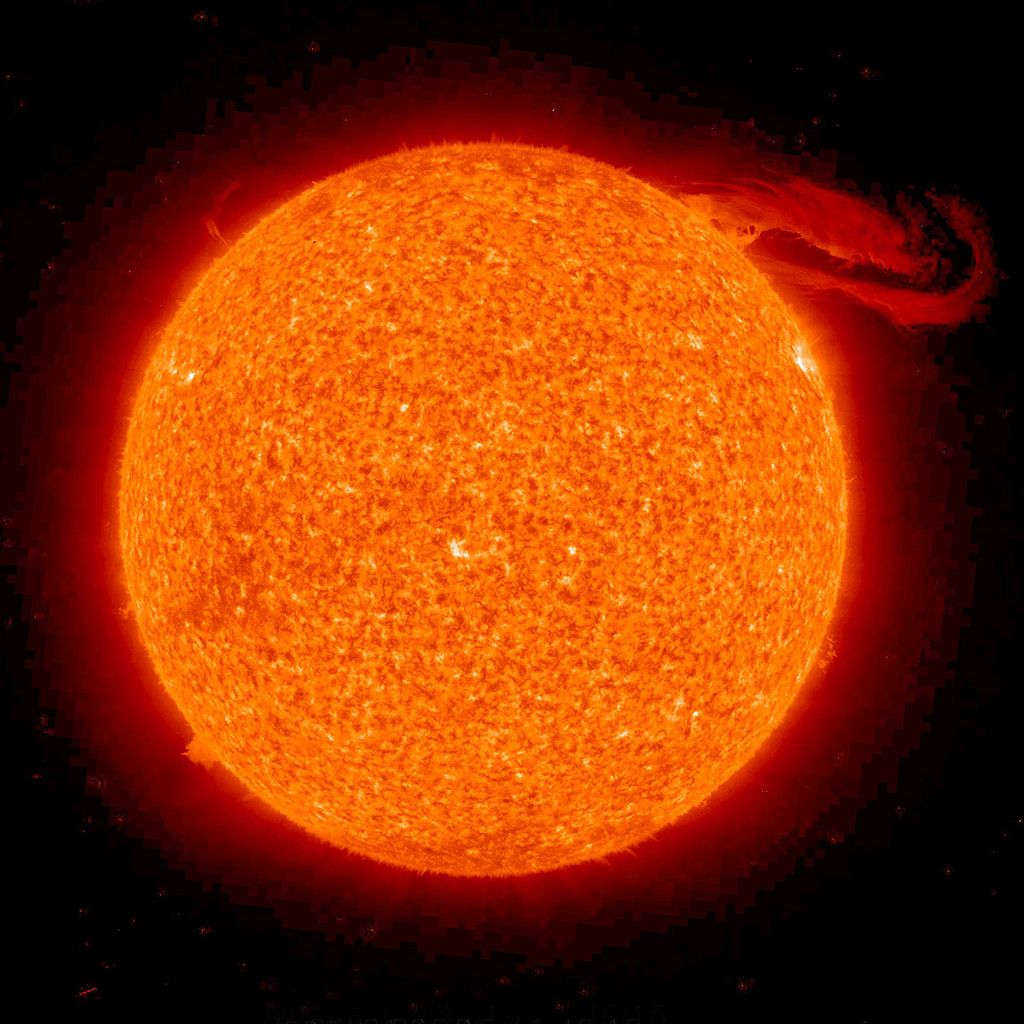
Though summer hasn’t officially arrived, the heat and humidity have, which means we are in energy curtailment.
Energy curtailment allows us to control our maximum energy demand or “peak”. If we can reduce energy where it isn’t needed, we ensure that everything that needs energy is getting it. Lower energy means lower emissions, better air quality, and better health for our community–our mission. It also saves us money as our utility rates are based on peak use. The maximum of energy we use at any given time determines the rate we pay for the entire next year. I can think of many other things to spend money on, can’t you?
In the past many of you felt cold on curtailment days. It seemed backwards, that you would save energy by having it be colder in spaces when it was so hot out. It was an effective way to save energy and money—it’s inefficient to produce heat when it’s hot out, and that’s what we were doing. By not producing that heat, some spaces felt cold.
Updating technology has allowed us to control this process better. Beginning in 2018, spaces that were previously cold will be affected differently by energy curtailment. They will still be pre-cooled at night. {“Pre-cooling” is a literal term: spaces are cooled in the early morning, before people arrive. This is also when energy use is lower, and before the sun is beating down and temps get really hot. Spaces are often cooled below the temperature set on the thermostat, which makes it easier for the system to keep up, once the heat and humidity are in full effect.} However, these spaces will not need to be pre-cooled to such a cold temp to see the energy savings. This does mean that your space will likely get a little warmer in the afternoon.
Not only does this tend to mirror what happens in a residential situation, it is overwhelmingly what you, the building occupants, have requested and we are happy to report that this is now possible.
We need your help! When we are in energy curtailment, we’ll ask you to help ease the energy load:
- close shades, blinds and curtains whenever possible to reduce solar heat gain;
- lower lighting levels where possible, turn off lights in unoccupied areas and when leaving a room;
- turn off and unplug all electrical equipment not in use (computers, coffee makers, printers, chargers, etc.);
- shut fume hood sashes when not in use; and
- open doors manually instead of using the ADA buttons.
- take the stairs instead of the elevator
- tell others!
These easy steps combine to have a huge impact, on the hot days and for the year ahead.
Commercial Recycling Changes
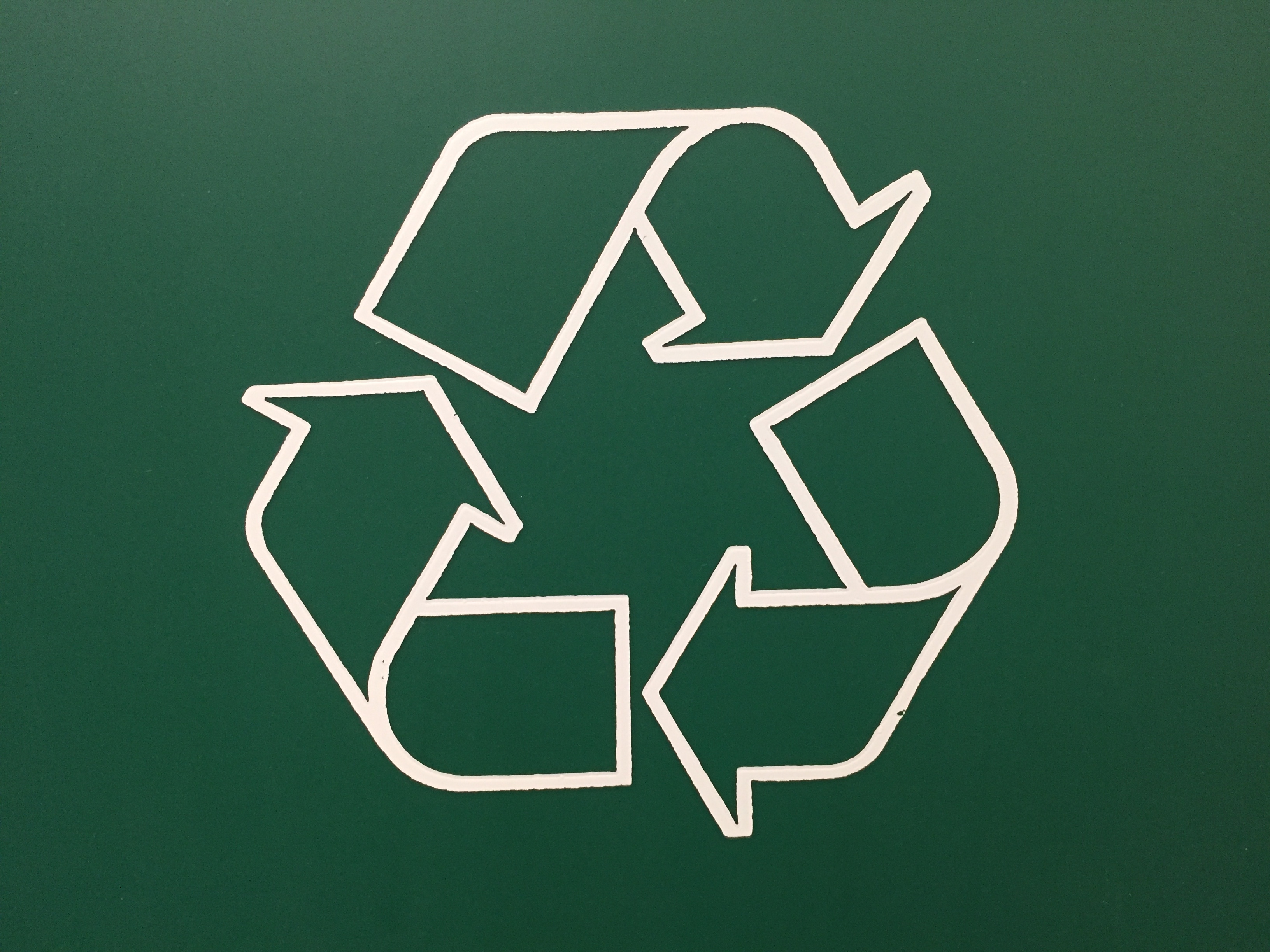
You may have heard FirstStar Fiber, Omaha’s materials recovery facility, made changes to their commercial recycling processes, effective June 1st. They will no longer be accepting “single-stream” recycling (all recyclables mixed together) from commercial customers.
To be clear, this will not change any aspect of residential/curbside recycling, it is only affecting commercial/businesses.
This change largely due to the level of contamination in the single-stream containers. Contamination in recycling can be items that are not recyclable (Styrofoam) or items that are recyclable, but are dirty, usually with food and liquid (greasy pizza box). Food contamination can also lead to issues for the people doing the sorting, as it can attract bugs/vermin. A little contamination can be dealt with, but a large amount usually means the load gets taken to the landfill. Contamination can be caused by a lack of education or laziness, but can also by people who place an item in a bin and just hope if it gets to the recycling place they’ll figure out how to recycle it. Nope. I understand the wish and the hope, but this action ultimately means less items are being recycled.
What does this mean for the Medical Center?
Right now, it does not affect us. We are already sorting our recyclables into 3 streams: Paper, Cardboard, and Mixed Plastic & Metal. Because of this we are already in compliance but are lucky—other businesses got less than a month’s notice which sadly means they are scrambling to figure out what to do and a lot of recyclables are probably going to go to the landfill.
Even though our process isn’t currently changing, we want to make sure everything that goes in a recycling container is recycled and that we do not have a contamination problem. Please:
- Visit our recycling page for information on recycling on campus
- Put all paper in the blue bins. It all gets shredded and recycled; easy peasy.
- Flatten cardboard boxes, regardless of size or cardboard type
- Empty all food and liquids prior to placing them in the plastic/metal bin
- Containers do not need to be washed clean
- Empty any food you don’t eat into the trash
- Dump liquids out of bottles, no need to rinse
- S. Get a reusable bottle! You’ll save money, it’s better for your health, and you won’t be drinking plastic pieces.
- Contact LiveGreen@unmc.edu or your LiveGreen Ambassador with any questions.
- Containers do not need to be washed clean
Earth Month Wrap-Up
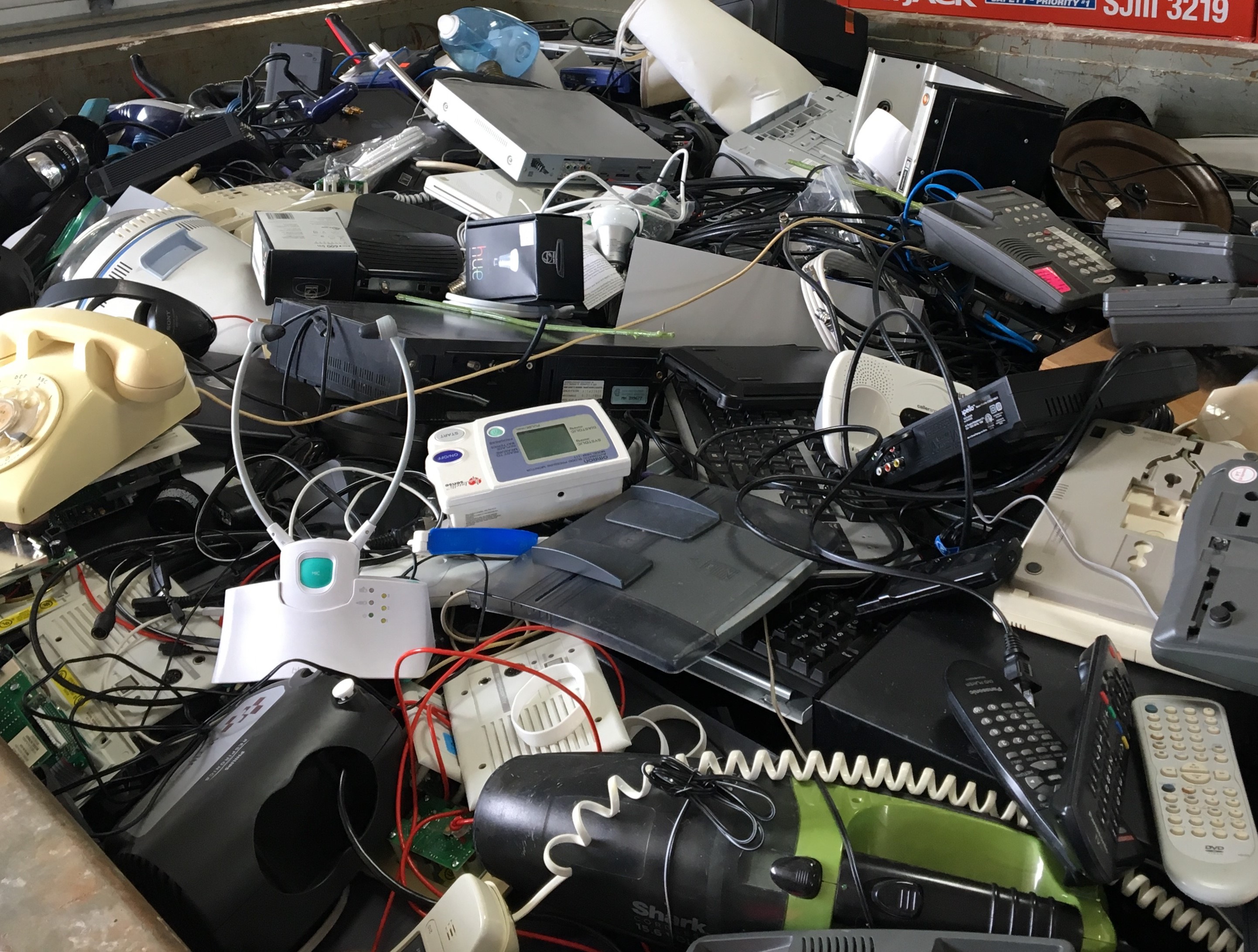
The first campus Earth Month puts up impressive numbers
In years past we have always had “Earth Week”—a weeklong celebration of International Earth Day. You requested more events and to have events spread out so it was easier for you to attend. We were happy to oblige and even happier to combine forces with UNO to be able to offer additional events while making sure you were aware of community events brought to you by the Nebraska Science Festival.
A special thank you to all of our awesome volunteers—without you this week would not have been possible!
All month long we asked you to join the Drawdown EcoChallenge and our team ranked 40th in the nation, with an impressive environmental and personal impact!
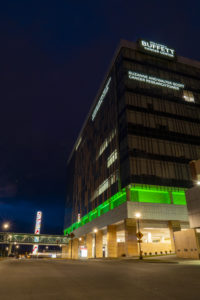
We kicked things off by providing you with personal care recipes, so you can reduce your exposure to chemicals, save money, and because we tested and use all of them, know they work. If you missed out, click here for copies.
UNO hosted the Sustainability Expo this year and we’ll host it on our campus next year. Snow (?!) and then rain forced us to move the “Yoga on the Green” sessions inside. As usual, it rained during the personal document shredding and electronic/battery/techno trash recycling event, but it’s still our most popular event with hundreds of you dropping off items:
- 141 eyeglasses donated to the TEI clinic; ~8000 pop tabs to Ronald McDonald House
- 401 pounds of VHS tapes, DVDs, CDs, and floppy disks
- 5,657 pounds of electronics
- 2,740 pounds of TVs and computer monitors
- 7,280 pounds of paper for shredding
- 150 pounds of alkaline batteries
- 16,228 total pounds (that’s almost 2,000 more pounds than last year and equals 8.1 tons or 4.5 average US cars!) diverted from the landfill. That impact?*
- 15 trees saved
- 151 gallons of oil not used
- 340,040 hours of electricity saved
- 4,603 gallons of water
We ended the week celebrating our status as a Tree Campus USA by the Arbor Day Foundation, replacing an Eastern Redbud tree that was removed due to disease, giving away Red osier Dogwoods and wildflower seeds, and asking Master Gardner Susan Siebler lots of questions.
We want to provide activities that are meaningful to you, both personally and professionally. If you have any additional comments, suggestions, or changes for next year please email us.
*Estimated impact; actual totals may vary slightly depending the exact mix of electronics turned in.
30×30 Nature Challenge
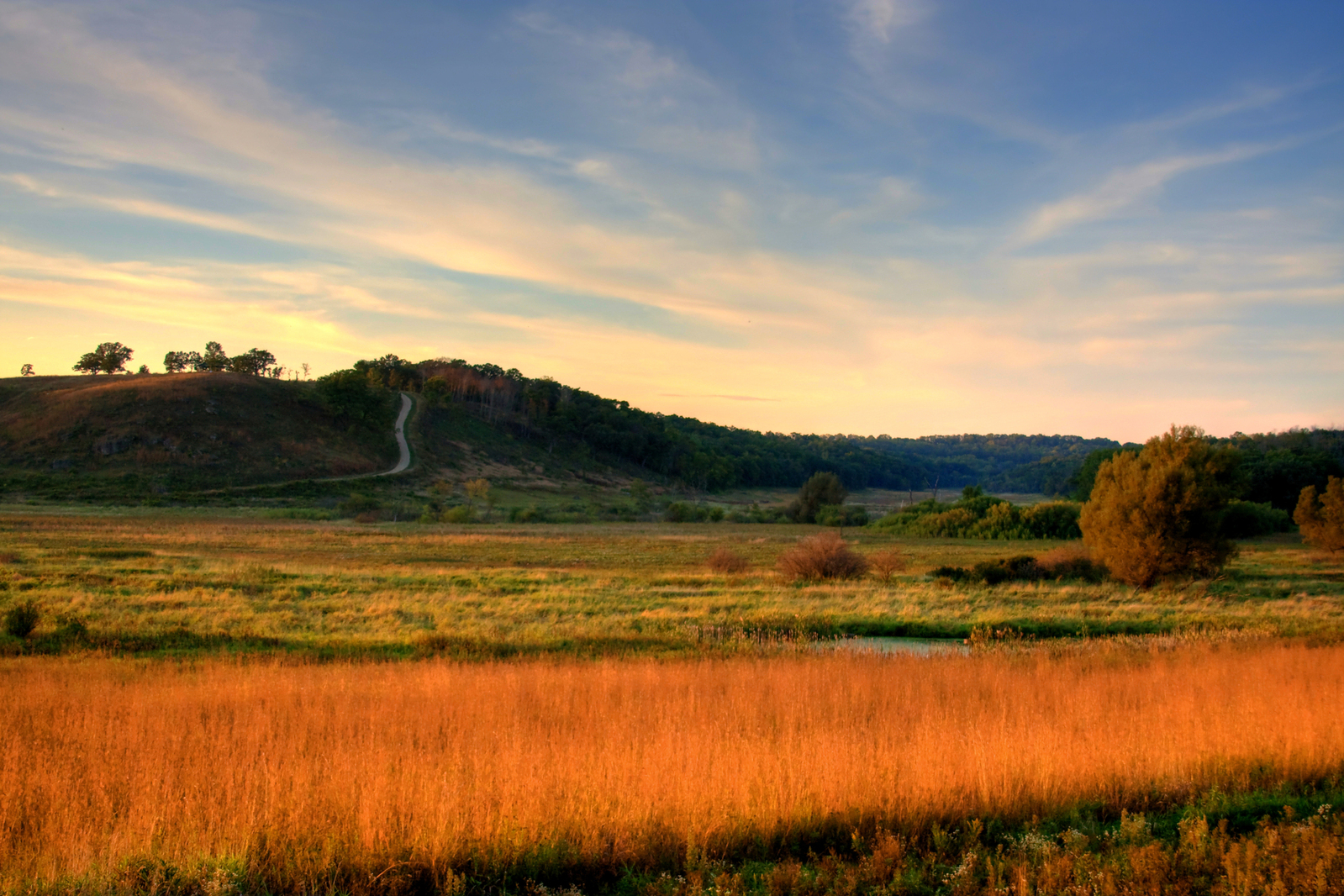
You may not have heard of the U.S. Green Building Council (USGBC), but you’ve probably heard of LEED (Leadership in Energy & Environmental Design) certification for buildings, which is the credentialing the USGBC provides for building construction. Here, we are covered by the USGBC Nebraska Flatwater Chapter.
The USGBC understands that the built environment is important, but it envisions “buildings and communities that will regenerate and sustain the health and vitality of all life within a generation.” Essentially, the built environment needs to work with nature instead of against it, or by dominating it. Working against nature can negatively affect our health and overall wellbeing.
The USGBC is asking everybody to spend 30 minutes outside in nature for the 30 days in June, hence the 30×30 challenge. That can’t be hard, right? Just 30 minutes of your day outside? You can take the dog for a walk, read in the shade of a tree, spend time in the garden, explore a new walking path, take the kids to a park and/or admire the sights, sounds and smells from anyplace—just get outside!
Benefits to you include:
- Decreased stress
- Exercise
- Stronger relationships
- Lowers blood pressure
- Reduces fatigue and helps children focus and control impulses
- Greater productivity, at home and work
- Increased satisfaction
- Improved memory, problem solving, creativity, and attention span
- Building community/camaraderie among neighbors
- Have a heightened sense of well-being
You can do this before work, on your lunch or break, or after work. Don’t forget that some of your favorite places are different in the dark, and that’s worth exploring too.
Like trees? Studies show heading to a forest can have additional benefits, and Fontenelle Forest is a great local attraction, (and they have Nature Discovery Day Camps for kids!).
After your 30 days are up, take stock of how you feel (bonus points for keeping a journal along the way). What benefits have you observed in your own life? Do you take a walk at lunch and find that you get more done in the afternoon? Did you have more or deeper conversations with your kids? Did your overall stress diminish? Maybe you lost a few pounds? Is your dog less destructive indoors?
Whatever it is, everybody will benefit from the 30×30 challenge. So what are you waiting for?
photo credit: freeimages.com/brianlary
Emerald Ash Borer Reminder

The Emerald Ash Borer (EAB) was confirmed in Douglas and Cass Counties in 2016, forcing quarantines and treatment zones 5 Nebraska and 2 Iowa counties. It is an invasive beetle that whose larvae bore into the layer of wood beneath the bark, which is responsible for water and nutrient movement in the tree, and this eventually kills the tree. Once an area is infested, it’s estimated that 80% of ash trees will be killed in the first 8 years.
Omaha has an estimated 100,000 ash trees, all of which could be wiped out by an EAB infestation. This will remove 14% of Omaha’s tree canopy and change the landscape of our city, while increasing air-conditioning costs. To help spread awareness, the Omaha Parks Foundation and City of Omaha Forestry Division have participated in EAB Awareness Week for several years. Ironically, this is how the EAB was discovered. Several trees have been wrapped with bright emerald ribbons to show what’s at risk. This includes several trees on campus.
While we have a diverse species of trees on campus, almost every tree lining Emile and Farnam Streets on the 42nd and Dewey campus are ash trees, including the trees the purple martins use in their migration. Almost all of the trees lining Regency Parkway, Abbot Drive, and along the streets of Memorial and Elmwood parks are ash trees.
Not only will we lose the trees and the benefits they provide, but removal of the dead trees will cost millions of dollars. EAB has killed hundreds of millions of ash trees in the U.S. since its discovery in 2002.
So what can you do to stop the devastation?
- Educate yourself on EAB, identify ash trees in your area, educate others.
- Observe the quarantine preventing the movement of firewood, mulch, timber, and green waste as beetles and larvae can hide, be transported, and infect other areas.
- Plant more trees now.
- Plant diverse species to protect against future loss.
- More than 60 species of broadleaf trees can be grown successfully in eastern Nebraska.
- Check out Keep Omaha Beautiful’s Trees for Omaha program.
Are you a homeowner with an ash tree?
- Remove ash trees in poor condition.
- Treat healthy ash trees to slow down the spread of EAB.
- Spray and soil applications are available; talk to a certified arborist.
- Plant more trees now.
- Plant diverse species to protect against future loss.
Get out and enjoy summer
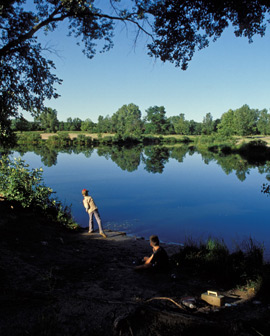
Graduation is upon us, kids are getting out of school, and the unofficial beginning of summer is upon us!
Did you know that spending time in nature is great for kids and adults and can improve health? There are many inexpensive ways to spend time outside whether you are a seasoned naturalist or a newbie, and you don’t even have to leave the area.
If you are interested in different plants and animals but aren’t a pro at identification, check out the iNaturalist app. It’s free (used in the City Nature Challenge this year) and is very good at identifying species—just snap a pic with your cell phone. Your sightings also help experts track biological diversity.
Henry Doorly Zoo and Lauritzen Botanical Gardens, are fantastic choices, but LiveGreen would like you to know there are LOTS of other options in and around this area: hiking, biking, fishing, bird watching, trains, camping, relaxing, there’s something for everybody. Locations are linked to easily allow you to find details/make plans for your weekends or staycations (and some have day camps for kids and teens, if you need to keep someone busy):
- Fontenelle Forest
- Two Rivers State Recreation Area
- Chalco Hills & Wehrspann Lake
- Mahoney State Park
- Hitchcock Nature Center
- Neale Woods – which includes the Millard Observatory
- Heron Haven
- Boyer-Chute National Wildlife Refuge
- Loess Hills State Forest
- Ponca State Park
- Kramper Lake at Danish Alps
- Omaha City Trails
- Prairie View Recreation Area
- DeSoto Bend National Wildlife Refuge
- Gifford State Forest
- Blackbird Marsh County Preserve
- Fremont State Recreation Area
- City of Omaha Parks (lists all parks, locations, and amenities)
- Schramm Park State Recreation Area and Ak-Sar-Ben Aquarium
- Platte River State Park
- Prairie Queen Recreation Area
- Fort Atkinson State Historical Park
- Lake Manawa State Park
- Douglas County Parks with access to rivers
- Lee G. Simmons Conservation Park and Wildlife Safari (Check out the calendar so you can time your visit to see enrichment activities for the Wolves and Bear. Go in the summer but make sure you come back in the fall to hear the elk “bugle”, it’s an experience you won’t forget!)
- Nebraska Game and Parks
Have fun and enjoy your summer!
P.S. Know of something we forgot? Feel free to share it in the comments below!
A great time for TravelSmart

Cost
TravelSmart is a perk and can save you money while reducing pollution and promoting a healthy lifestyle while reducing parking pressure and traffic congestion.
Yes, it’s FREE! Sign-up is free and your free bus pass will always be free. It’s not tied to your Metro Credit Union account; your badge is used only to identify you as a rider.
If you choose to carpool and all members of the carpool turn in their parking permits, you will receive a FREE carpool pass to the best parking lot among you (your group’s choice); and nobody pays for parking.
Carpool
If you want to carpool but don’t know who to drive with, check our carpool matching page. By using this service, which you can restrict to see only people coming to this campus, you aren’t committing to signing up for carpooling, or even talking to your matches. It just shows you options.
NEW: this software can also help you find a walking/bicycling (both have free shower/locker room access) partner or a person to ride the bus with you on your first trip.
Parking Permit
Not quite ready to relinquish your parking permit? You can keep it and still use any of the active transportation options with access to all the support programs. You can use active transportation as frequently as works for you. Turning it in will save you additional money. Our Savings Calculator will tell you how much money you can save and whether it’s financially advantageous for you to keep your permit or turn it in—but either way it’s still your choice. As gas prices continue to increase, you’ll see even more savings.
Daily Rate Flexible Parking is available if you need to drive to campus and don’t have a permit. It’s cheap, lots are located around campus, and you can pay via smartphone or website.
If you carpool partner isn’t coming to work, you can still use your carpool pass. If you are both driving that day, one can use the carpool pass and the other can use Daily Rate Flexible Parking.
The 3 month trial starts when you turn your permit in. You save money while you test out TravelSmart, and get your same permit back if you still want it.
Questions?
If you have more questions visit our FAQ page or Video/Resources page. Or email TravelSmart@unmc.edu , we are happy to help!
Registering for TravelSmart
Click on the appropriate button on our registration page to go to the correct self-service page. Please note that Nebraska Medicine and Clarkson College employees need to check the “Olympus” box prior to logging in. If you are unfamiliar with that page check out the instructions with screen shots on our registration page to help guide you.
Tree Campus USA Award

In 2013 the campus applied for, and for the first time, was granted Tree Campus USA designation from the Arbor Day Foundation.
Each year, an internal committee made of faculty, students, staff, Grounds, and community members and a certified arborist review the campus tree plan, set goals, track expenditures, complete a Student Service Learning Project, and plan an Arbor Day observance as part of completing the Tree Campus USA application for the following year.
I am happy to report we have received Tree Campus USA designation in 2017, for the 5th straight year! We will continue to pursue this honor each year while sustaining our community forest and educating individuals on the importance of trees.
Trees play a vital role on our campus: beautification, shade, energy savings, water retention, home to the migrating purple martins each year, and most importantly, provide the oxygen we need to breathe. Did you know that visual exposure to trees can reduce stress, specifically by lowering blood pressure and muscle tension?
For more information on our application or to see past applications, please see our Tree Campus USA page. You can also visit the Arbor Day Foundation’s Tree Campus USA program page.
If you would like to be on the Tree Campus USA committee or help plan Arbor Day activities, please contact LiveGreen@unmc.edu
Last Friday we celebrated Arbor Day by planting an Eastern Redbud tree outside the Administration Building, replacing a tree that was not in good health and had to be removed. We also gave away free dogwood trees and wildflower seeds, (I’m out of both) and asked Master Gardener Susan Siebler all kinds of questions—and we got to do it in the sunshine! If you missed the event, we’ll do it again next year.
Don’t forget that planting trees at home has lots of benefits too; in addition to oxygen production and health benefits, they absorb carbon dioxide, increase property values, and lower your energy bills.
